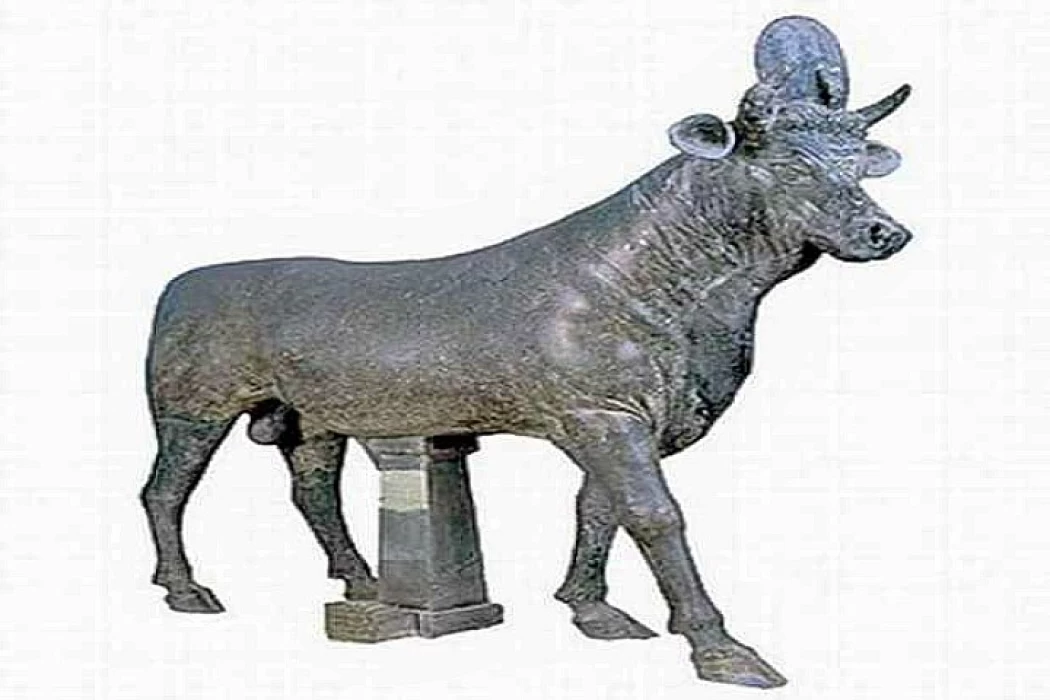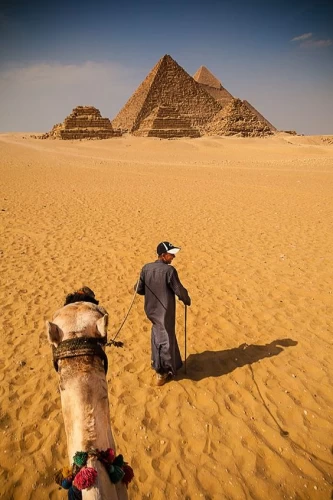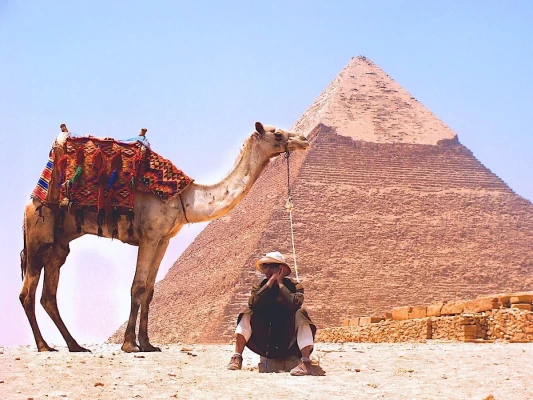
塞拉皮斯神 | 古埃及诸神
塞拉皮斯神
Serapis通常被描绘成太阳,生育和来世。 他的同伴是伊希斯,奥西里斯的妻子,根据托勒密时期古埃及宗教最受欢迎的神灵之一。 塞拉皮斯被代表为一个男人,他有一个精心设计的希腊发型,穿着希腊风格的长袍和一个完整的胡子。 他经常把篮子戴在头上. 有时他被描绘成一条蛇,以纪念他与黑社会和生育的联系。
塞拉皮斯的崇拜对于托勒密王朝来说是一个巨大的成功,在埃及建造了各种寺庙来崇拜他。 主庙在托勒密首都亚历山大. 根据地理学家斯特拉博的说法,亚历山大的Serapeum位于城市的西部。 虽然它是整个地中海的一个重要地点。
古埃及诸神
古埃及的众神非常像他们所爱和憎恨的人类,他们感到嫉妒和战斗,他们报复,杀戮,并且在一个充满欢乐,行动和戏剧性事件的惊人神话中死亡,这些事件激发了现代电影导演和制片人创造世界着名的关于法老和他们崇拜的神的电影。
我们的团队将帮助您前往埃及,并在复活节2024期间体验我们美丽国家的阳光明媚的天气,这要归功于他们对埃及旅游的广泛了解。 您可以通过选择我们的埃及旅游套餐之一来定制您的套餐,或者在短暂的访问中充分利用您的时间,了解更多关于埃及历史及其迷人的故事,并通过在开罗的私人旅游体验它。 加入我们通过撒哈拉沙漠前往埃及的预算之旅之一,例如开罗的Siwa之旅,或者最好是埃及白色沙漠之旅。 探索我们到阿斯旺的一日游,从阿斯旺到阿布辛贝勒的一日游,或者从陆路旅行,享受我们到卢克索的一日游,看看令人难以置信的卡纳克神庙、卢克索神庙、哈特谢普苏特神庙,看看国王谷里画得漂亮的坟墓。
Serapis was usually depicted as the sun, fertility, and afterlife. His companion was Isis, the wife of Osiris, and one of the most popular deities according to religion in ancient Egypt during the Ptolemaic Period. Serapis was represented as a man with an elaborate Greek hairstyle wearing Greek-style robes and a full beard. He often wears a basket on his head. Sometimes he is depicted as a serpent in honor of his connection with the underworld and fertility.
The cult of Serapis was a huge success for the Ptolemaic dynasty, and various temples were built in Egypt for his worship. The main temple was in the Ptolemaic capital, Alexandria. According to the geographer Strabo, the Serapeum in Alexandria stood in the west of the city. Although it was an important site throughout the Mediterranean.
The marble head of the god Serapis was created. It was found in 1999 while excavating at the sea's bottom in Abu Qir, Alexandria. His temple in Alexandria, the Serapeum, was considered one of the most important temples, and Serapis was worshipped as the god of healing and the afterlife.
The god Serapis is depicted with curly hair and a thick beard. On the top of his head is a hole for the calathos, decorated with plants in relief, which Serapis was often depicted with and which was found far from the head on the seabed east of the city of Canopus.
The story began at the walls of the ancient city, where a muscular young man sent his men to the city of Pontus to bring a new god to Alexandria, the god "Serapis". This was what Ptolemy I (Soter) dreamed of, to include the worship of the god Serapis within the Alexandrian trinity in order to consolidate the rule of the Ptolemies in Egypt.
There are other opinions that this idol was a gift from the city of Sinope during the reign of Ptolemy II (Philadelphus) in response to Egypt's gift of wheat to that city.
Some historians believe that the idea started during the reign of Alexander the Great, when he saw Serapis in a dream and ordered the construction of a temple for him.
The Egyptians had been worshipping the same gods for thousands of years, and Ptolemy I knew they were unlikely to accept a new deity. So he took aspects of two of the most popular gods—Osiris and Apis—and mixed them with the Greek king of the gods, Zeus, building on the already established Egyptian cult of Osirapis, to create Serapis. The historian Plutarch (c. 45/46–120/125 CE)
The seven-pointed star was a symbol of the Egyptian god Serapis. This bust, possibly found in Egypt, shows a man wearing a diadem adorned with a seven-pointed star. Traces of paint are visible: Red on the hair and beard, and pale blue on the eyes. The wreath was once gold-plated, but little is left of it now.
A golden wreath depicting Serapis in front of a temple facade, found inside a pottery vessel in the village of Dosh in the Kharga Oasis. The artifact dates back to the Roman era and is housed in the National Museum of Egyptian Civilization, the first of its kind in Egypt and the Arab world. Serapis is the ancient Egyptian god of healing.
















